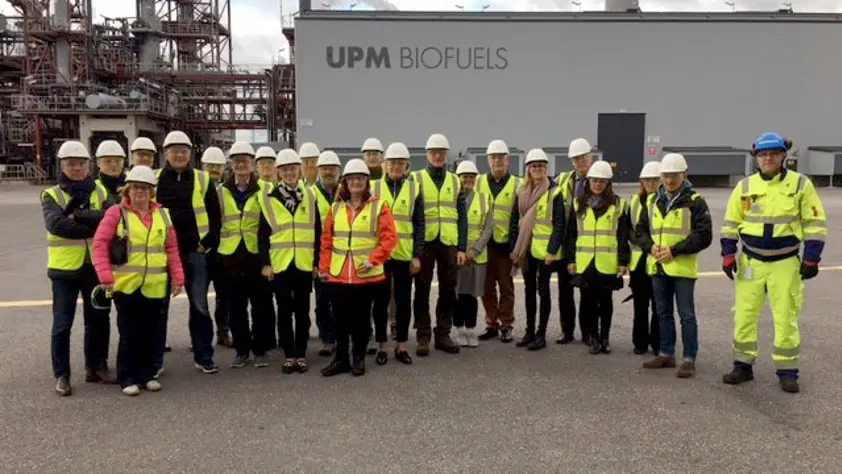Even from the windows of the bus, you can see that Finland is the world’s most densely forested country – up to 86 % of the land is covered by forests, and the growing stock amounts to over 2 billion cubic metres. Even though deforestation is a hot topic, the forest area within the EU has grown over the past 20 years by 11 million hectares.
We are heading to UPM’s forest in Kouvola. At the end of a narrow forest road, harvesting machines are in full swing: From one harvesting site, the wood is transported to numerous UPM mills and transformed into plywood, sawn timber, pulp and paper. Over ten mills can receive wood from a harvesting site.
The group of decision-makers from the European Parliament, Commission and member states are putting on rubber boots, helmets and reflective vests. Wood harvesting is common in Finnish forests, but the guests are very intrigued.
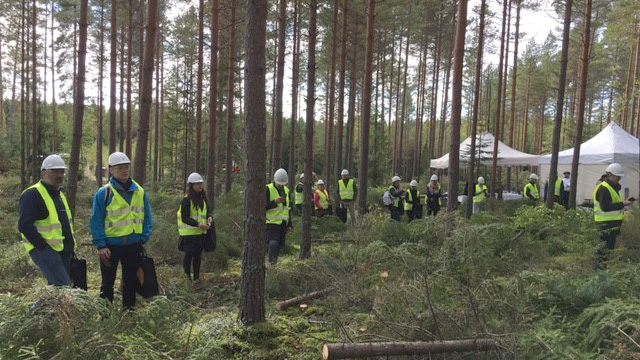
We’ll introduce sustainable forestry methods and talk about the importance of harvesting. While we enjoy our lunch, made from products of the forest, Professor Antti Asikainen from the Natural Resources Institute Finland (LUKE) is giving a presentation on how forest management and regeneration are increasing carbon sinks in comparison to old and unmanaged forests. Responsible forest management and the harvesting procedures it entails is very wise when it comes to climate issues. In Finland, for example, the forests grow 110 mm3 a year, and stemwood harvesting accounts for 65 % of this growth.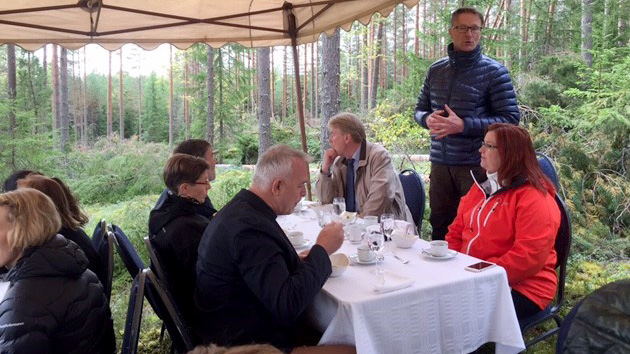
In addition to Finnish wood harvesting, the EU decision-makers are learning how UPM has implemented an international biodiversity programme as part of their forest management strategy. As we stand in the middle of a small thinning area, Sami Oksa from UPM Wood Sourcing and Forestry informs the guests about forest certification as the top method for enhancing and implementing sustainable forestry. Sami gives a practical example. He explains that after harvesting by planting 50 million seedlings a year, there are no changes in land use, Another great example is how thousands of species relying on deadwood are provided with favourable living conditions by leaving deadwood in the forests. “Every area is renewed after thinning, either by planting, sowing or naturally.”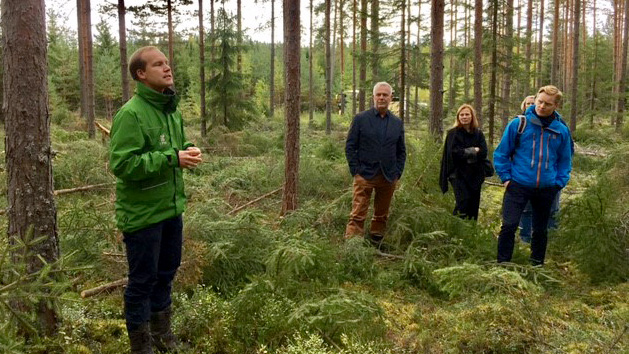
Obviously, the guests are interested in technology and massive, modern harvesting machines. The forest manager explains how he records the measures that have been performed and new information, such as occurrences of threatened species, valuable natural sites and conservation areas, as well as tree growth. Valuable habitats are protected. The percentage of preserved certain natural habitats is 100. By doing this, we ensure that forests are managed in an economically, environmentally and socially sustainable way. 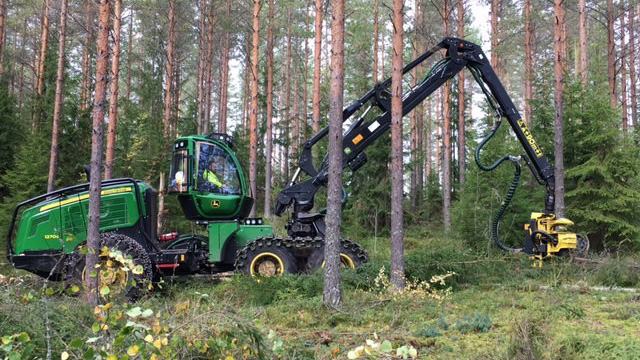
The forest visit including the alfresco lunch is a valued experience for the foreign guests, whose native countries handle forests and forest management in a different way than we do in Finland. Seeing sustainable forest management in practice impresses them all.
The second visit of the day is to the UPM Kaukas mill site. The guests receive an introduction on how pulp, paper, energy and sawn timber is produced at the Kaukas mills by utilizing wood efficiently and sustainably. During the tour of the mills, the guests are getting a more concrete picture of the process as they get to witness how a log actually transforms into sawn timber.
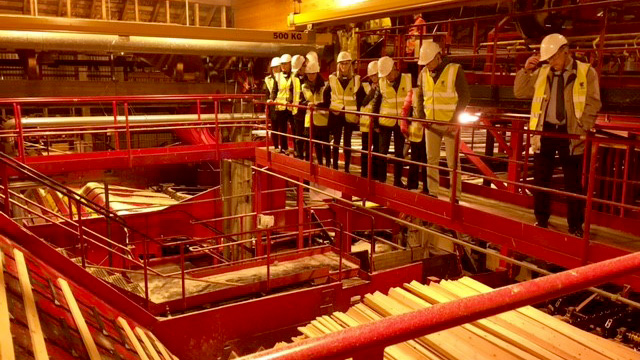
As a tanker truck bringing wood-based diesel to the customer drives past us, it’s great to be able to tell the guests that wooden spools were already being produced at the Kaukas mill 140 years ago. The leftovers were used to produce pulp. These days, the residue of pulp production is used to produce renewable diesel, which is suitable for all diesel engines.
The bus stops in front of a biorefinery that looks like a small oil refinery. The control room, located on the upper level of the spool factory, provides a view over the entire biorefinery – the first of its kind in the world. In the field, the Operations Manager of the biorefinery, Risto Kotilainen, takes us to see 50 kilometres of piping and over 7000 valves. This is where the magic happens: the mill’s unique process of taking crude tall oil from the resin of the wood and transforming it into renewable diesel. The refinery produces 120 million litres of fuel per year. Named UPM BioVerno, it significantly decreases the carbon dioxide and exhaust emissions of road traffic. Additionally, the production of this fuel doesn’t require an increased level of harvesting work or land use.
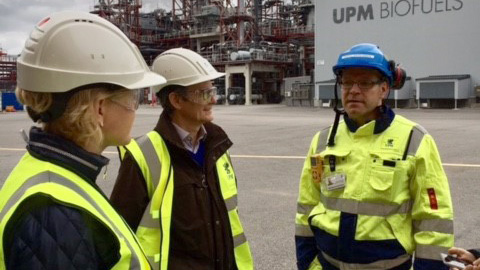
The visit ends at the Kaukas Club House, where the Kaukas mills originally ran. Today, it is the venue for discussing Finnish bioeconomy. “Innovations are the fuel for change,” says Jyrki Ovaska, Executive Vice President, Technology at UPM. He continues: “UPM plans to become a major player in the production of wood-based biochemicals and biofuels.”
The aim of the visit, which was organised by the Finnish Ministry of Economic Affairs and Employment was to convince stakeholders in Brussels of the amazing potential of bioeconomy. UPM has managed forests and developed innovations within the wood industry for over 100 years, and wanted to give a practical example of how versatile solutions can be created from wood if constant innovation is encouraged. The company also demonstrated that the wheels of bioeconomy are rolling in Finland – cleaner than ever. Wood is valuable raw material for Finnish forestry, and efforts have been made to ensure that every fibre is utilised as thoroughly as possible. Corporate responsibility is an integral part of all our operations. It also gives us a clear advantage over the competition when new innovations are brought onto the market.
